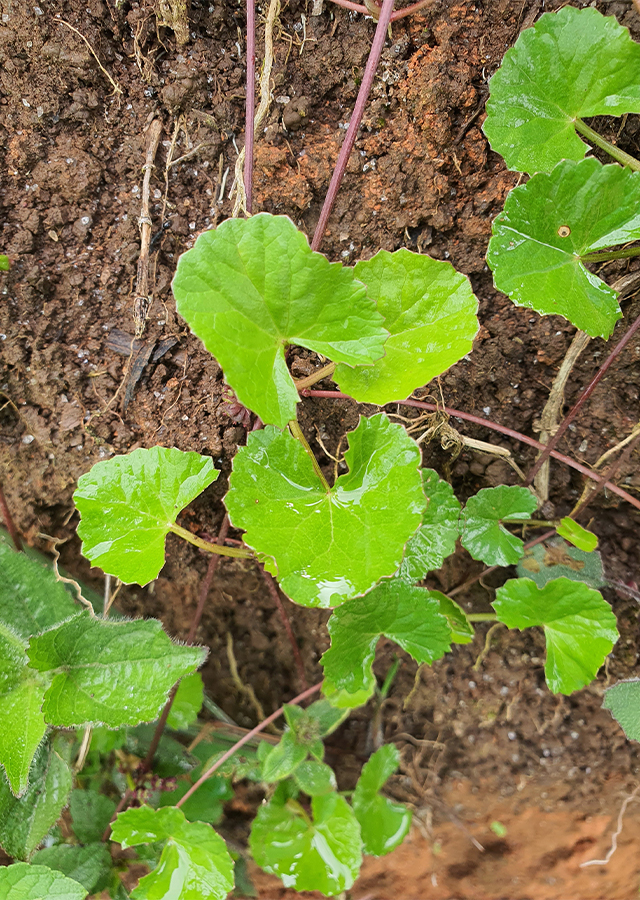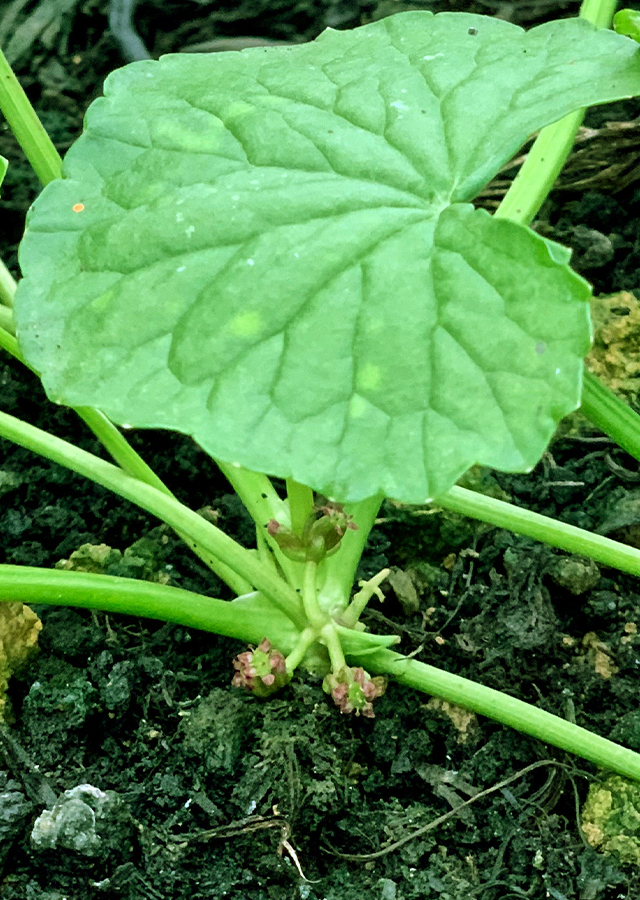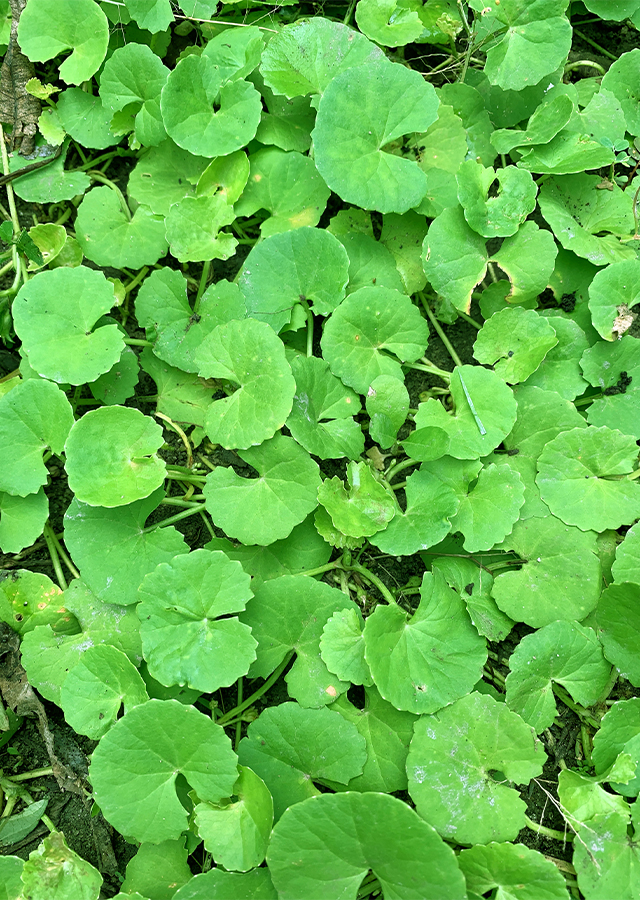Traditional Herbs from Centella asiatica
reduce_symptoms_of_depression
- Prepare 5 g of fresh gotu kola leaves, 500 ml of water.
- Boil the leaves until they boil and about 250 ml of water remains.
- Drink 2 times a day.
jengkol_poisoning_treatment
- Leaves 10-15 pegagan leaves are boiled in 3 glasses of water until boiling and the water is reduced to 1 cup. Cool and strain.
- Drink the potion once a day.
What is Centella asiatica Looks like??



Parts of Centella asiatica that could be used
- All Parts of the Plant
Centella asiatica Distribution
Spread throughout the tropics, including Southeast Asia and in some subtropical areas. Its diversity is found in South Africa. Gotu kola has long been used in traditional Chinese medicine and Ayurveda. In Indonesia, especially West Java, the leaves are consumed as fresh vegetables.Agroecology of Centella asiatica
Wild herb that grows in areas with an altitude of 700-2,500 m above sea level. This plant is often found in plantations, fields, roadsides and rice field embankments. Likes soil that is slightly damp, has enough light, and is somewhat protected.
Morphology of Centella asiatica
- Short roots found in nodes, stolons soft, and jointed.
- Stems creeping, branching a lot, each branch forms a new plant.
- Rosette leaves, shaped like a kidney, the edges of the leaves are serrated and located around stems.
- The flowers appear in the axils of the leaves and are arranged like greenish, pink or reddish umbrellas.
- The small fruit is oval in shape/flat and tastes bitter but has a fragrant smell.
Cultivation of Centella asiatica
Propagation is vegetative (stolons) and generative (seeds).
Centella asiatica, more details :
Chemical Content of Centella asiaticaTriterpenoids (asiaticoside, madecoside, asiatic acid, madecasic acid), flavonoids, phytosterol, tannins, saponins, thankuniside, isothankuniside, brahmoside, brahminoside, brahmic acid, meso-inositol centellose, carotenoids, hydrocotylin, vellarine, free amino acids (alanine, serine, aminobutyrate, aspartate, glutamate, lysine, threonine), fatty acids (linoleic acids, linolenic, oleic, palmitic, stearic acids).
Benefits of Centella asiatica
Healer of wounds, inflammation, rheumatism, asthma, hemorrhoids, tuberculosis, leprosy, dysentery, fever, cough (dry, blood), canker sores, high blood pressure, liver swelling, measles, boils, blood enhancer, improve the immune system, increase appetite, cleanse blood, improves digestive disorders, Alzheimer's, relieves stress, relieves urine, vomits blood, nosebleeds, treats red eyes and swollen eyes, worm medicine, treats jengkol poisoning.
Simplisia of Centella asiatica
- Prepare fresh leaves then wet sort them to separate them from any dirt attached. Wash them with running water until clean.
- Dry them in the air until they dry evenly (3 days) or use a special oven for 2 days.
- Save in an airtight container.
Another Facts for Centella asiatica :
Synonym of Centella asiaticaCentella boninensis Nakai ex Tuyama, Centella coriacea Nannf., Centella glochidiata (Benth.) Drude
Habitus of Centella asiatica
Herb. Annual herbaceous plant, reaching 10-20 cm in height
Habitat of Centella asiatica
- Wetland", "Riverside", "Forest", "Roadside", "Grassland
No comments:
Post a Comment